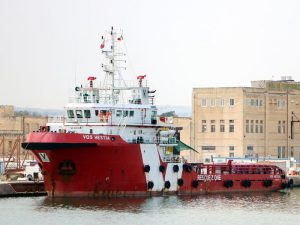
Specially classed rescue ship looks to aid refugees
OCTOBER 25, 2016—As a result of the ongoing refugee crisis, more than 3,000 people have drowned this year in the Mediterranean trying to escape from North Africa. That’s an increase of over

OCTOBER 25, 2016—As a result of the ongoing refugee crisis, more than 3,000 people have drowned this year in the Mediterranean trying to escape from North Africa. That’s an increase of over
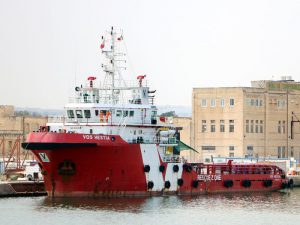
OCTOBER 25, 2016—As a result of the ongoing refugee crisis, more than 3,000 people have drowned this year in the Mediterranean trying to escape from North Africa. That’s an increase of over
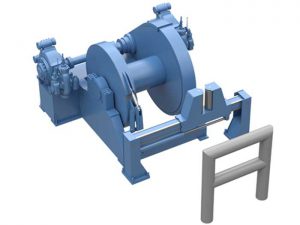
OCTOBER 24, 2016 — Rolls-Royce has signed a contract to deliver propulsion and deck machinery for the 13 new Damen design tugs that Edison Chouest is to build to service two major
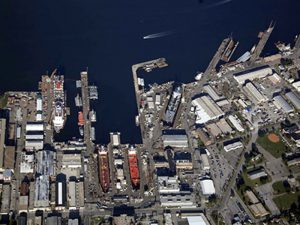
OCTOBER 16, 2016 — Detyens Shipyards Inc., North Charleston, SC, has won two Military Sealift Command contracts worth a total of more than $12.8 million. Detyens is being awarded a $9,252,917 firm-fixed-price
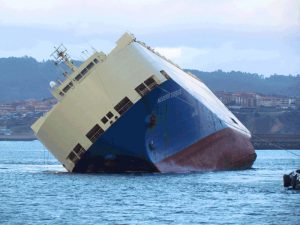
On January 29, 2016, the Roll-On/Roll-Off (RO/RO) carrier Modern Express, a Panama-registered ship transporting 3,600 tonnes of wood and construction machinery from Gabon to France, was caught in as severe storm in the Bay of Biscay. Battered by huge waves, the vessel developed a severe list and lost engine power. The captain sent out a distress signal, and the vessel’s 22 crew members were airlifted to safety by two Spanish helicopters, leaving Modern Express to founder in heavy seas without crew or power.
Rapid response team SMIT Salvage, a Dutch salvage and towing company that specializes in emergency operations, was called to handle the case, and the DNV GL ERS team was activated.Within hours, SMIT had chartered two heavy tugboats to secure the vessel and had a ten-man salvage crew on the scene. DNV GL put three technical experts on the case to provide advice on stability and structural strength issues based on the original vessel drawings and a predefined 3D computer model.
Aware that the wind and sea conditions were pushing Modern Express towards the southwestern coast of France, the SMIT team attempted to attach a tow line to the stricken vessel. Rough seas made this impossible, but on February 1, four SMIT salvage experts were lowered onto the deck of Modern Express by a helicopter, where they were able to attach towlines. This allowed a tug to turn the vessel and steer it away from immediate danger. While no personnel were injured during the operation and the loss of the vessel was no longer an immediate threat, the job was far from over, and the focus of the operation shifted to guiding the vessel to a safe port.
Safe harbor
“Our first priority in a crisis situation is to carry out the necessary calculations to assess the condition of the vessel and to advise personnel on-site how best to manage the crisis,” says Øyvind Træthaug, Principal Engineer Emergency Response Service at DNV GL.“Together, our duty teams in Oslo and Hamburg handle about 40 cases a year. Not all require salvage operations, but when they do, we try to support the efforts of the salvors. We have worked extensively with SMIT in the past, and have developed a good, cooperative relationship with them.”
According to Richard Janssen, Commercial Direct or of SMIT Salvage, the greatest challenge in any salvage operation is gaining timely access to reliable information. “Until we get people on board to assess the condition of the vessel itself, it is difficult to get an accurate picture of what we are dealing with,” he says. “The stability calculations we receive from the class of the vessel, combined with analysis from our own team, can make a big difference in how we approach salvage operations.”

Challenging conditions
Janssen says that the greatest challenge in any emergency salvage operation is coordinating the flow of information between various stakeholders. “In a case like this, we work with the owner, local maritime authorities, lawyers and underwriters to coordinate our response. We received excellent support from DNV GL in this situation,” says Janssen, adding that the hands-on assessment of the vessel’s condition was difficult. “The vessel was listing at 40 degrees, with some decks partially submerged, making it difficult for our experts to assess structural damage.However, DNV GL’s calculations helped confirm our own analysis of the vessel’s condition and we agreed the ship was seaworthy enough to be towed.”
Righting the ship
After having applied for a place of refuge in accordance with the new EU Operational Guidelines, the Spanish authorities gave their approval by February 2 for Modern Express to head for the harbor entrance in the Port of Bilbao in Spain, where a boarding team of eight SMIT salvors were put onto the vessel to connect up additional tugs for berthing.The vessel was secured to the dock with specialized shore-tension equipment after the necessary inspections could be carried out.The next challenge was how to right the ship.
“We discussed using counterweights to bring the ship upright, but as the SMIT team was able to assess the vessel more thoroughly, we verified and helped SMIT to improve a nine-step dewatering sequence using pumps and ballast tanks to gradually right the ship,” says Træthaug, who was very happy with the result.Work began on February 6 and the team managed to reduce the vessel’s list from 51 degrees to zero.
“We measure the quality of our service in how quickly we can produce and deliver useful information and recommendations for decision support in critical situations,” adds Rossen Panev, a DNV GL Principal Engineer who collaborated on the case with Træthaug. “Working closely with salvors like SMIT gives us the opportunity to enhance each other’s skill sets and provide the customer with the best possible advice when the pressure is on and they need to make fast decisions.”
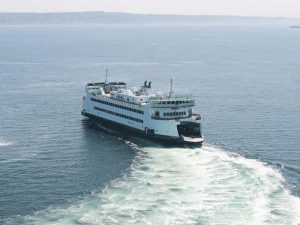
“Legally, a ferry is the continuation or prolongation of a highway over a navigable stream.” This quote is from the first Transactions of the Society of Naval Architects and Marine Engineers (SNAME), published in 1893. Given the impact of ferries upon society, it should come as no surprise that they have been a topic of interest to many naval architects for many years. The Pacific Northwest region of the United States contains a mix of islands, rivers, peninsulas and lakes. Salt water and fresh water transportation routes have been a critical part of the economic development of the region beginning with the native peoples and continuing today. Since the arrival of the first settlers in the 1850’s, power-driven ferries have been a common sight, linking the various communities through the movement of goods and people.
What is a double-ended ferry and why choose this configuration? A double-ended ferry is one where vehicles are loaded on and off both ends of the vessel and the direction of travel switches so the bow becomes the stern. The greatest argument for a double-ended ferry is when the route is short such as a river crossing. The time to maneuver the vessel so it can back in to the dock becomes a significant portion of the overall time between departures. The maneuvering time also consumes additional fuel and imposes the risk, however small, of any maneuver going awry. Another advantage is that the vessel will have the same handling characteristics every time it enters or departs a terminal. With its propulsion at each end, the double-ended ferry has excellent stopping power and superior maneuverability, especially if using an azimuthing or cycloidal propulsion system. This all contributes to safety, a critical factor for any ferry.
The origins of Elliott Bay Design Group (EBDG) go back to the late 1920’s with the establishment of W.C. Nickum & Sons. The earliest ferry projects were to modify the double-ended ferries from the San Francisco Bay area that were made superfluous by the bridge building activities there in the 1930s. Since that time EBDG has worked on a wide variety of vessel sizes and propulsion types, to suit routes ranging from short river crossings to 20 nautical mile transits of exposed water.

The typical ferry we have designed has a V hull amidships with a narrow, flat of bottom at baseline. The side shell flares outboard with one or two knuckles between the heavy guard at the deck edge and the bottom. This configuration produces surfaces that are fully developable which facilitates construction. Typically, the waterline beam is 80% of the maximum beam. This shape provides excellent reserve buoyancy for damage stability and adds waterplane area as the vessel heels, thus improving intact stability. Where there is a draft limit, we increase the width of the flat of bottom. At the ends the waterline shape typically narrows to a fine entrance. Because the waterline beam decreases more quickly than the beam at deck, the effect is to create substantial sponsons. These are located sufficiently far above the bow wave to avoid increased wetted surface as the bow wave increases with speed. The shape of these sponsons also needs to consider wave slamming in rough weather, so a compromise is sometimes required between calm water resistance and speed in waves. The lower part of the hull at the ends is fitted with a skeg to support the shaftline (with traditional shafting on centerline) and to support the hull in dry dock. The skeg shape and volume are critical to the shape of the bow wave, hence we carefully consider the section area shape, including skegs. In more recent projects we have seen greater emphasis on reducing hull resistance, especially for ferries that operate on route lengths of greater than 2 nautical miles. Over the 40 to 50 year life of a ferry, small reductions in drag can result in significant fuel savings, and of increasing importance, lower emissions. Through the use of computational fluid dynamics we can find a balance between low resistance and ease of construction.
The double-ended ferry lends itself to a wide variety of propulsion configurations. Historically, these have ranged from steam-driven, side paddlewheels to a cable ferry powered by horses on a treadmill. In more recent times, we have seen the diesel engine become the dominant power source with a variety of means of putting the power into the water. Clearly, there is no preferred approach that works for every ferry. As designers, we look for the machinery configuration that meets the owner’s performance requirements with the best balance between reliability, maintainability, fuel efficiency and operability. This search typically takes the form of a propulsion study where we work with the owner to establish weighting criteria for the various aspects of the propulsion system. Typically, an owner will have strong opinions on what equipment and what configuration works well for his operation.
We are also seeing more clients interested in different forms of propulsion to reduce their overall energy consumption and thus reduce their environmental footprint. Owners are willing to trade off the simplicity and reliability of traditional geared diesel propulsion for reduced energy consumption through use of hybrid propulsion with electric drives, batteries for energy storage, and smart control systems. We are also seeing increased interest in alternative fuels such as liquefied natural gas, biofuels, and even hydrogen.
This year EBDG developed a physics-based simulation tool to evaluate different propulsion technologies for different sizes of ferries operating on different types of routes. This tool calculates hull resistance, weights, fuel requirements, and hull characteristics in an iterative fashion until the basic parameters of weight and buoyancy are in balance. The outputs from the tool are estimates of capital and operating costs as well as carbon emissions. We can now work with ferry operators to assess the economics of using technology to reduce environmental impacts.
So, what has 50 years taught us? First is that there always will be opportunities to improve the art of double-ended ferry design. Some recent trends include:
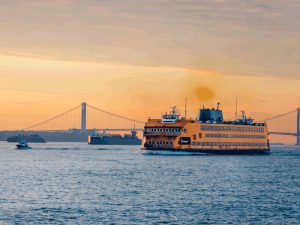
Considered the “forgotten borough” by some New Yorkers, Staten Island is on the verge of making its presence known in the city that never sleeps. The borough is a 25-minute ferry ride from the lowest tip in Manhattan, the Staten Island Ferry terminal at Whitehall.
Staten Island’s plan for renewal includes a $1.2 billion investment that will see the construction of the New York Wheel at St. George—an impressive 630 ft tall observation wheel that will rival England’s infamous London Eye, and feature 36 pods with accommodations for 40 in each, on a 38 minute ride/revolution, giving passengers a spectacular view of New York Harbor. Alongside the New York Wheel, New York City’s first outlet mall, Empire Outlets, is currently being constructed at St. George. The mall will feature 350,000 square feet of retail, 100 different shops and a 190-room hotel. Both the New York Wheel and Empire Outlets are expected to be operational by 2018.
How will tourist, potential shoppers, and New Yorkers alike make their way to these new attractions? They’ll be taking the Staten Island Ferry of course. The fleet, currently comprised of nine ferries, carries 22 million passengers a year—second only to Washington State Ferries’ fleet which carries over 23 million passengers annually.
And come 2019, the Staten Island Ferry fleet will welcome a new class to its fleet—the Ollis Class ferries.
Designed by Seattle-based Elliott Bay Design Group, the Ollis Class will mix the new with a bit of the old, providing passengers with a faster, more efficient ride to help meet increased ridership demand.
Its design will give the 320 ft x 70 ft ferries a striking resemblance to the beloved John F. Kennedy—which was commissioned in 1965 and is one of the oldest ferries in the Staten Island Ferry fleet. The Kennedy is one of three-that will be retired once the new Ollis Class series is delivered—the S.I. Newhouse and Andrew J. Barberi, both commissioned in 1981 are the other two.
The new Ollis Class will be double-ended and have capacity for 4,500 passengers; and like the Kennedy, will feature plenty of open air space, enabling passengers to enjoy the harbor view. The ferries will be built to ABS class requirements and will be powered by Tier 4 EMD engines and Voith Schneider Propulsion Drives.
The first of the three ferries will be named in honor of U.S. Army Staff Sgt. Michael Ollis, a native Staten Islander who died while saving another soldier in Afghanistan. He was only 24 years old.
The Staff Sgt. Michael Ollis ferry is expected to begin operations in 2019, with vessels two and three following later in 2019 and 2020.
Building the Ollis Class
As we were going to press, yards were putting in their final bids for the ferry project.
Among the yards that have expressed interest in the Ollis Class—at least according to the 2015 Industry Day attendance—are Conrad Shipyard, Eastern Shipbuilding Group, Fincantieri Bay Shipbuilding, and Vigor. All are builders of a variety of vessel types including ferries.
Conrad Shipyard—which has won a number of newbuild contracts this year — has had its share of ferry projects in the past, and is looking to keep the momentum going.
As Dan Conrad, Conrad Shipyard’s Senior Vice President and Director, explains, “Conrad Shipyard has a great track record on deliveries to the Puerto Rico Maritime Authority, the Texas Department of Transportation, the State of North Carolina and the Alaska Marine Highway, among others.” And he assures that his team is committed to pursuing the ferry market for years to come.
Most recently, Conrad’s Conrad Aluminum, Amelia, LA, yard delivered the M/V Woodshole to the Steamship Authority. The 235 ft x 64 ft ferry was designed by Elliott Bay Design Group and has capacity for 384 passengers, 55 automobiles or 10 eighteen-wheel tractor-trailers.
Eastern Shipbuilding Group is said to have the inside track on building the Ollis Class ferries, according to our sources. It would be quite a month for the Panama City, FL-based shipyard, which recently secured the lucrative contract to build the OPC for the U.S. Coast Guard.
Meanwhile, Fincantieri’s recent expansion is helping it position its Bay Shipbuilding yard for larger projects that can be produced and worked on, year-round. The three-acre expansion will pave the way for additional covered fabrication and erection facilities, an indoor paint and coating building, and outfitting shop that will enable FBS to increase its pursuit of ferry projects.
“This expansion allows us to increase our capacity and positions us to pursue a number of new construction markets, including large passenger ferries,” said FBS Vice President and General Manager Todd Thayse. “Our experience in building ferries and other complex passenger vessels dates back to our origins almost a hundred years ago, and includes the New York Staten Island Ferry now operating (the Guy V. Molinari). We have the people, the experience, the facilities, and the global resources of Fincantieri to ensure that we can tackle the most challenging construction projects.”
As for the shipbuilding powerhouse in the Northwest, Vigor, it’s currently working on six ferry projects at the moment, including the final two vessels in Washington State Ferries’ new 144-car Olympic Class.
 “Vigor has deep expertise in the ferry market with successful, on-time and on-budget deliveries of car ferries, passenger only vessels and catamarans. Six ferries are currently under construction at our Washington and Alaska yards and we expect ferry construction to continue to be a focus in our business development efforts, leveraging our considerable experience,” said Corey Yraguen, Vigor Executive VP of Fabrication.
“Vigor has deep expertise in the ferry market with successful, on-time and on-budget deliveries of car ferries, passenger only vessels and catamarans. Six ferries are currently under construction at our Washington and Alaska yards and we expect ferry construction to continue to be a focus in our business development efforts, leveraging our considerable experience,” said Corey Yraguen, Vigor Executive VP of Fabrication.
Just last month the Chimacum, the third in the series was christened at Vigor’s Harbor Island yard. The fourth vessel in the series, the Suquamish, is currently under construction and scheduled for completion in 2018, with operations set to begin in 2019.
The 144-car ferries are the result of a combined effort from a consortium of Northwest based companies, including Nichols Brothers Boat Builders, Freeland, WA, which has been in charge of building the superstructures for the144-car ferries.
In other Vigor ferry news, Vigor’s Ballard Facility (formerly Kvichak Marine) is building two 400 passenger ferries for the Water Emergency Transportation Authority of San Francisco (WETA). The Incat Crowther designed ferries will travel 27 knots and are scheduled for delivery Summer 2017.
And Vigor’s Ketchikan yard in Alaska has taken up the task of constructing the highly anticipated 280 ft Day Boat ferries for the Alaska Marine Highway System. The ferries, designed by Elliott Bay Design Group, are scheduled to be completed Fall 2018.
Vigor’s Executive VP of Business Development, Keith Whittemore, will be discussing Vigor’s ferry projects and more at the Marine Log Ferries Conference & Expo November 3 & 4, 2016, Seattle, WA. Attendees of the event will also have the chance to tour Vigor’s Harbor Island yard after the conference’s conclusion. Learn more at www.marinelog.com/events
Route Extension?
Staten Island Borough President, James Oddo sparked additional interest in the Staten Island Ferry system when he requested the New York City Department of Transportation explore the feasibility of extending the Staten Island Ferry’s route north of the Whitehall Terminal, possibly extending the service into midtown.
While the idea sounds great in theory, and will certainly foster a sense of “transit equality” for Staten Islanders who have a grueling commute (just ask our Editor-in-Chief, John Snyder), the route extension could prove problematic as there is currently no operating terminal in place in midtown, with the right infrastructure to handle such large vessels.
 New York’s Ferry Boom
New York’s Ferry Boom
Of course, the Staten Island Ferry isn’t the only New York City ferry operation making waves. Operated by Hornblower NY, Citywide Ferry Service’s new fleet of ferries are currently under construction at Louisiana-based Metal Shark Boats and Alabama’s Horizon Shipbuilding. The contract catapults both yards into new markets—propelling Metal Shark into the commercial market in a very big way, and introducing Horizon to the ferry market.
A large portion of the Incat Crowther-designed ferries are expected to be delivered in time for Citywide Ferry Service’s launch Summer 2017. The service, according to the New York City Economic Development Corporation is projected to make 4.6 million trips annually.
The 85 ft ferries will have capacity for 150 passengers, as well as space for bikes, strollers and wheelchairs. The Citywide Ferry Service is expected to add five new routes on the East River.
Meanwhile, another well-known ferry operator in New York harbor is upping its stake in the market. Seastreak says its “raising the bar in fast passenger ferry service” with the addition of a new, high-speed, 600-passenger, catamaran in 2017. The ferry will be the highest passenger capacity USCG K-class high speed ferry in the U.S.
The addition of the new ferry will help Seastreak meet growing passenger demand on the New Jersey to New York route.
 Designed by Incat Crowther, the ferry, the first in Seastreak’s new Commodore class, will be 147 ft 8 in x 39 ft 5 in. The vessel was designed to provide Seastreak with an operational advantage. The ferry’s boarding arrangement will include large forward and aft side gates as well as an adjustable bow ramp. This will help facilitate turnaround times at terminals.
Designed by Incat Crowther, the ferry, the first in Seastreak’s new Commodore class, will be 147 ft 8 in x 39 ft 5 in. The vessel was designed to provide Seastreak with an operational advantage. The ferry’s boarding arrangement will include large forward and aft side gates as well as an adjustable bow ramp. This will help facilitate turnaround times at terminals.
The first vessel in the series will be built at Gulf Craft Shipyard, Franklin, LA. Construction is to be completed by 3rd quarter 2017. Meanwhile, Seastreak expects a keel to be laid for a second Commodore class vessel before the end of 2016.
The Commodore Class ferry will be powered by four MTU 12V4000 M64 EPA Tier III main engines, each delivering 1,875 hp at 1,800 rev/min and driving Rolls-Royce KaMeWa 63S4 waterjets. The vessel will also feature LED lighting and an advance energy efficient HVAC system.
The ferry’s main deck will hold 234- passengers; mid deck will seat 271 passengers inside and 52 passengers outside; and the third deck features 160 exterior seats as well as the vessel’s wheelhouse.
Seastreak is also initiating the upgrades and repowering of several members of its current operating fleet. First one up will be the Seastreak New York, which is expected to enter into drydock this coming winter. At press time, the bids were out to multiple yards. The repowering project is expected to be completed by the end of the 1st quarter 2017.
Florida gets in the game
New York isn’t the only city getting its ferry action on. This month, service officially begins on the Cross-Bay Ferry system—connecting St. Petersburg and Tampa, Fl. The service is part of a pilot project intended to introduce residents and visitors to water transit services in the area.
The route will be operated by the 98 ft twin-hull aluminum catamaran, Provincetown IV. The ferry was originally built for Bay State Cruise Company, Boston, MA, by Gladding-Hearn Shipbuilding, the Duclos Corporation, Somerset, MA. Designed by Incat Crowther, the 149-passenger ferry can operate at a top speed of up to 30 knots on the 50 minute route.
“We only have one vessel, and one crew, so we cannot do everything, but we do mean to showcase this technology to a lot of people and test ferry service in a variety of ways and markets,” said Ed Turanchik, policy advisor for the project.
Organizers of the project are testing the service on a variety of different market segments including tourist and local commuters, and the entertainment and sports markets. Learn more about the project at CrossBayFerry.com.
VDOT accepts ferry bids
Last month, the Virginia Department of Transportation was accepting bids for a new 70-vehicle ferry based on a design by Alion Science. The boat would be a replacement for the VDOT’s oldest ferry, the Virginia, built in 1936. Construction on the steel-hull ferry is to start this fall with completion in 2018.
Gladding Hearn delivers high-speed ferry
Gladding-Hearn Shipbuilding, the Duclos Corporation, recently delivered a new 493 –passenger, high-speed Incat Crowther designed ferry to Hy-Line Cruises, a division of Hyannis Harbor Tours, Inc., Hyannis, MA.
The all-aluminum ferry is 153.5 ft x 35.5 ft and is powered by four Cummins QSK60-M, EPA Tier 3 diesel engines each delivering 2,200 bhp at 1,800 rev/min. Each engine will power a Hamilton HM721 waterjet through a Twin Disc MG61500SC horizontally-offset gearbox.
Incat Crowther says the ferry represents an evolutionary step from its previous designs built by Gladding-Hearn. According to the designer, the capacity increase had to fit within docking constraints, enforcing upper limits on both the length and beam of the vessel. To meet the requirements, it moved the wheelhouse to a third deck, freeing up the front end of the second deck for VIP passengers.
The restructuring shifted boarding arrangements, with the addition of a middeck boarding door and both forward and aft stairways improving passenger flow and turnaround times, says Incat.
The ferry will provide year-round service between Hyannis and Nantucket Island. It will top speeds of over 34 knots when fully loaded at a deadweight of more than 64 tonnes, said Peter Duclos, President of Gladding-Hearn.
The new ferry is also outfitted with a Naiad Dynamic trim-tab, ride-control system to help improve passenger comfort and safety. The system’s motion sensor measures the relative movement of the vessel and transmits a signal to the hydraulic device to counter the boat’s actions through the waves.
Europe’s Ferry Market
The European ferry market remains in the forefront of technology. The continent that gave the world emission-free, battery operated ferries, will now give forth, the world’s largest hybrid ferry.
Just last month, Norway’s Color Line reported that it would order the largest hybrid ferry ever built. The ferry, which will feature batteries charged via green electricity from dedicated shore side facilities, or recharged on onboard via the ship’s generators, would double the capacity of the vessel it will replace.
Tentatively named the “Color Hybrid, the ferry will be 160 m long and have capacity for 2,000 passengers and up to 500 cars. The ferry is expected to be put into service on the Sandefjord, Norway to Stromstad, Sweden route in 2020.
 And not to be outdone, Damen says its ready to launch its first composites-construction Water Bus. As we were going to press, the prototype was prepping to begin sea trials.
And not to be outdone, Damen says its ready to launch its first composites-construction Water Bus. As we were going to press, the prototype was prepping to begin sea trials.
The Damen Water Bus is the first vessel for public transportation produced at Damen Shipyards, Antalya, Turkey. Its benefits are plentiful—the vessel, which features a slender hull, making it lighter than a traditional aluminum vessel, requires less fuel consumption, less maintenance, will suffer from no corrosion or fatigue problems. It can travel at speeds up to 21 knots and has capacity for 100 passengers.
Damen’s Design & Proposal Engineer, Fast Ferries, Marcel Elenbaas, explains that the Water Bus is built using high quality vacuum infusion technology that creates a “difficult to penetrate closed cell, epoxy sandwich structure.”
Damen says the vessel is ideal for highly congested urban areas, and is a simple and efficient way for using a city’s natural waterways system.
The Water Bus is equipped with two, forward facing, double-screw podded propulsion units—helping to reduce vibrations. Damen says the vessel can be easily adapted to customer specifications, and because of the nature of the composites’ production process, delivery to clients will be quick.

OCTOBER 11, 2016 — Efforts to come to grips with reports of sexual harassment and assault at the United States Merchant Marine Academy (USMMA), Kings Point, NY, continue. Earlier this month, the
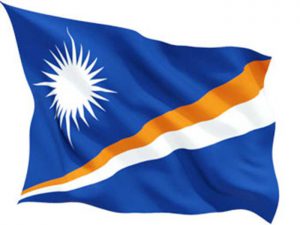
OCTOBER 10, 2016 — The Republic of the Marshall Islands (RMI) now has more tankers under its flag than any other registry, according to Reston, VA, headquartered International Registries, Inc,. which provides
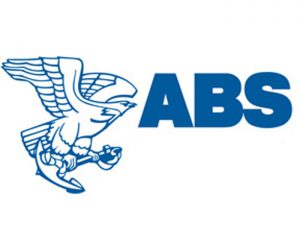
OCTOBER 10, 2016 — Classification society ABS has been awarded a two year research contract that will focus on defining the future of cybersecurity for the maritime industry. The contract has been